OSHA Fall Protection for Solar Installation
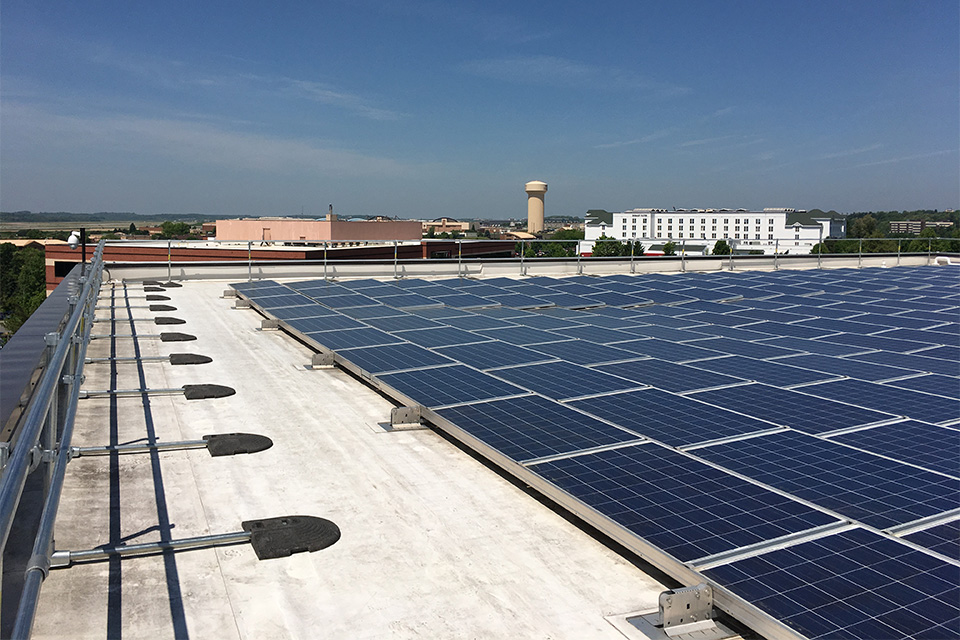
Solar panel installations are growing in popularity for commercial buildings. Whether you want to increase energy efficiency, decrease your carbon footprint, or line up with green initiatives, you may be pursuing a solar panel installation.
Most solar arrays get installed on commercial rooftops. This means that any workers on roofs are exposed to fall hazards.
In this article, we’ll walk you through who is responsible for solar fall protection, what OSHA says, and what your options are.
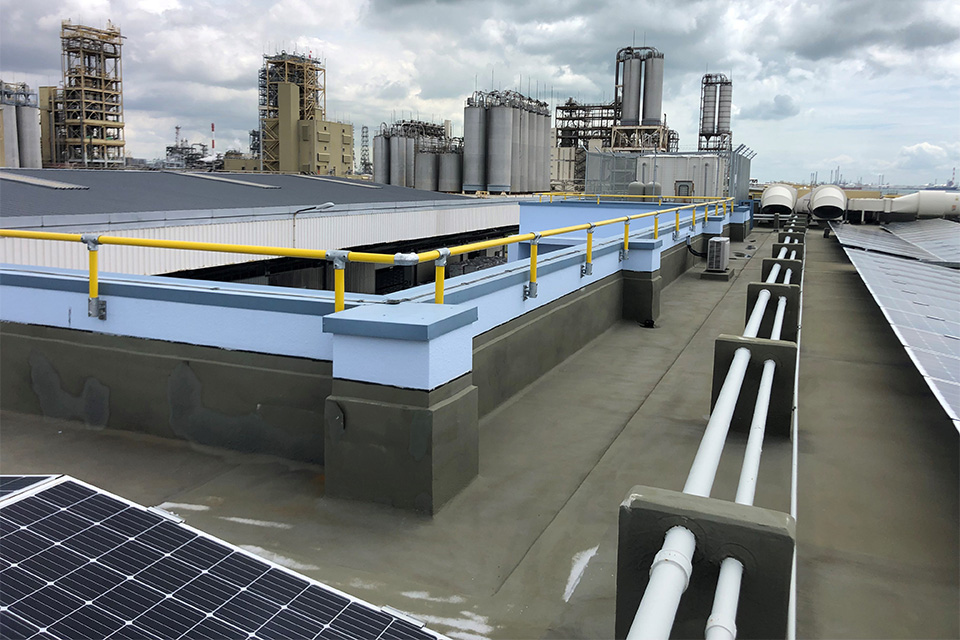
Who is Responsible for Solar Rooftop Fall Protection?
The age-old question: who is actually liable for fall protection requirements on a job site?
Is it the owner of the building? The purchaser? What about the general contractor or subcontractors?
The answer is yes. Yes, to all the above. Here is an excerpt from OSHA to help bring some clarity to this:
Under the provisions of the Occupational Safety and Health Act of 1970 (OSH Act), employers must provide a workplace free from recognized hazards that are causing, or are likely to cause, death or serious physical harm to employees regardless of the size of business. Employers must comply with OSHA standards under the OSH Act.
If you are employing someone to do work, you need to provide a safe working environment. OSHA says in 1926.16 that each company is responsible for the safety of their portion of the work.
The easiest way to think of it is to ask yourself this question. Are you paying someone to work? If yes, then make sure that a fall protection plan is in place.
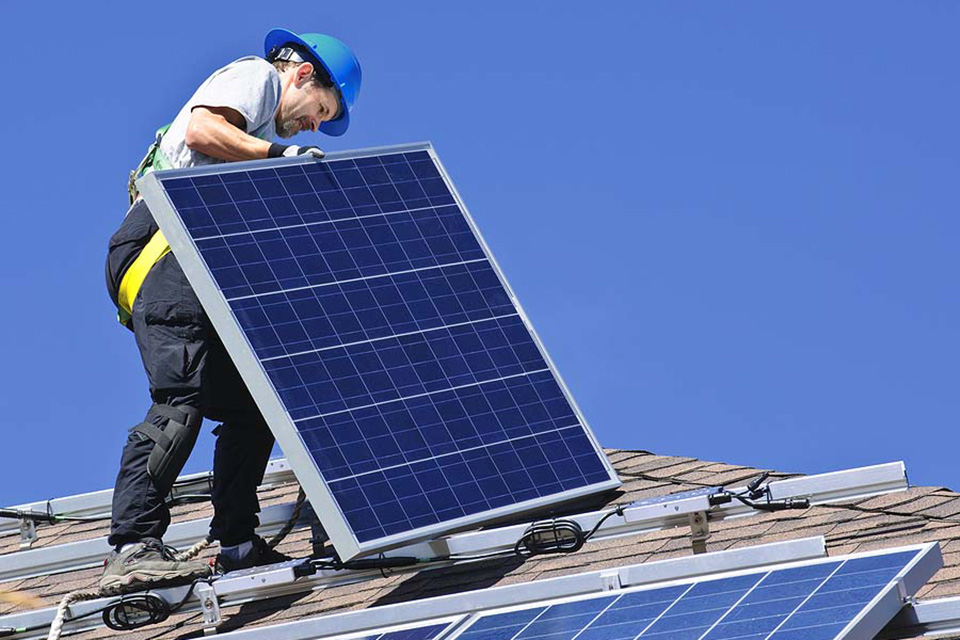
When Does OSHA Require Fall Protection for Solar Installations?
This is going to be broken down into two categories: during installation and after installation.
OSHA’s Construction Code is what you want to reference while installing a solar array. Fall protection is required anytime you are working on a level that is 6 feet or more above a lower level. You can use a guardrail, a personal fall protection system, or a safety netting system for fall protection.
Construction code talks about safety monitors and controlled access zones, but these can only be used with roofing work or overhand bricklaying work. So, any worker during the installation of a solar array needs to have fall protection if they are on a level that is 6 feet or above another level.
Once the solar installation is complete, you will switch over to OSHA’s General Industry Code. This code requires fall protection whenever a level is 4 feet or more above a lower level.
There is an exception to standard fall protection in General Industry. If the work is temporary and infrequent (takes less than 2 hours and happens once a month or less), you don’t need fall protection beyond 15 feet from the roof edge. You can use a warning line instead at 6 feet if the work is temporary and infrequent.
Just remember that the work has to be both temporary and infrequent for this to apply. If you have a job that doesn’t comply with this definition, make sure to adjust the safety plan to include more robust fall protection if needed.
It’s easy to see that rooftop solar installation is going to need fall protection, especially when solar panels are installed close to the roof edge to maximize space.
Let’s talk about the types of fall protection you can use with solar installations.
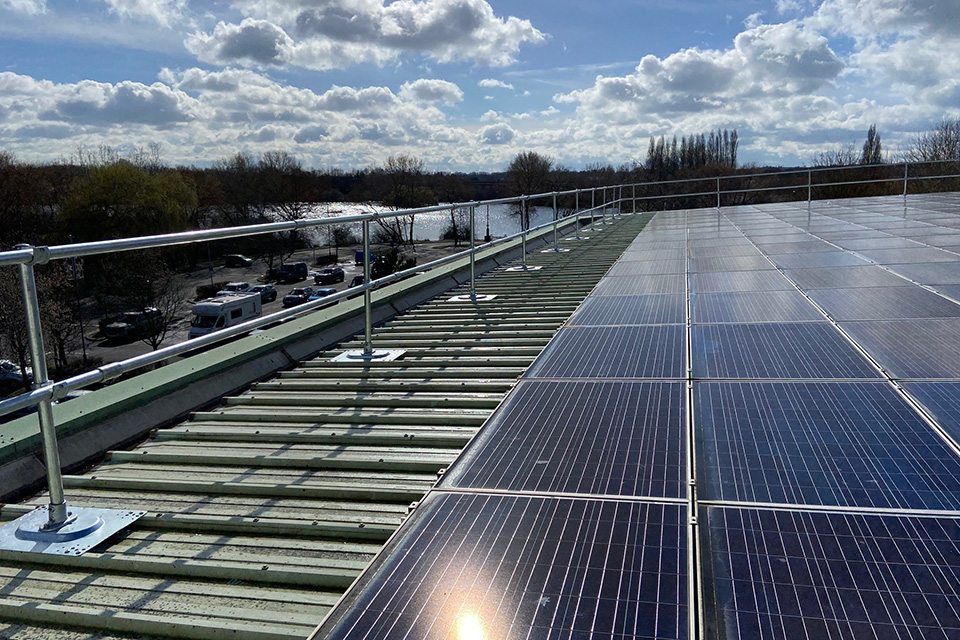
What are Fall Protection Options for Solar Installations?
OSHA says that you can use guardrails, personal fall protection systems, and safety netting systems for fall protection.
I mentioned warning lines earlier. However, the space required for warning lines to work makes this an unlikely solution. The space needed includes the distance to the edge and the clear distance around the solar array for fire code compliance. So, unless you have a huge open space on your roof, you’ll probably need to look somewhere else.
Personal fall protection systems use a lifeline, a rope with a rope grab, or some other connector. The solar array can often impede this type of system. Connectors being snagged and potentially damaged on the solar panel frame could be disastrous to the worker. I do not advise using this for post-install fall protection. Be very careful using this during installation.
I don’t see safety netting systems deployed as fall protection very often. When I do, it tends to be with open floors during construction. I do not advise using safety netting as a permanent fall protection solution because they need to be under the worker, which isn’t much of an option on a finished roof.
The best solution for fall protection near solar installations is a rooftop guardrail. Guardrail is a passive and collective fall protection system. This means that it protects everyone who is engaged with it. Also, no active participation is required, like wearing a harness.
If you install the right guardrail before solar installation, fall protection can be covered during and long after installation. Guardrails can be non-penetrating if you have a low-slope built-up roof. You can also mount it onto a parapet wall to save space and material costs.
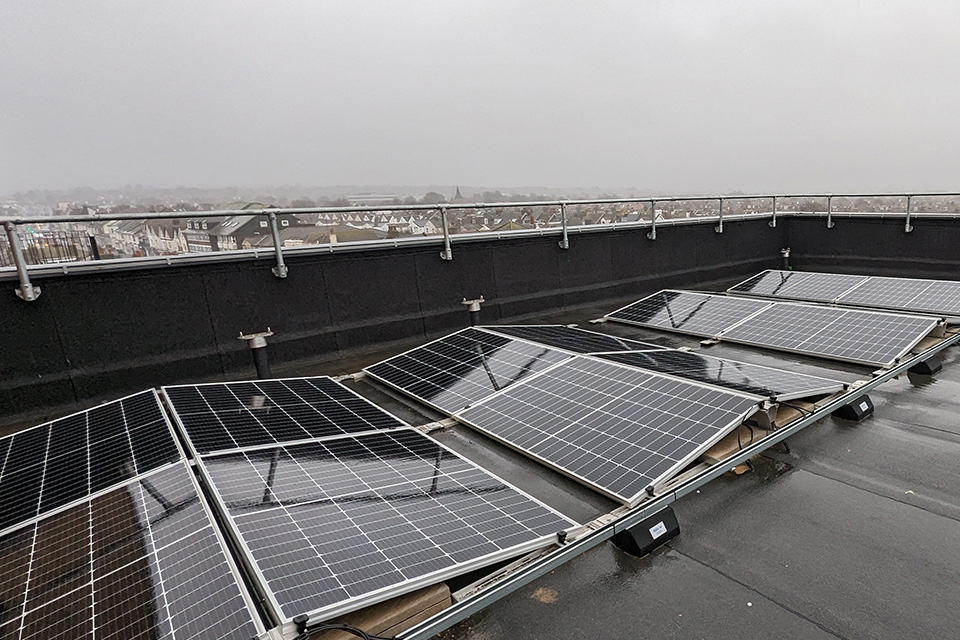
Commonly Missed Rooftop Solar Hazards
The roof edge is not the only fall hazard on your roof that you need to look out for. Here are a few more areas you need to address to maintain a safe and compliant roof for solar installations.
Rooftop skylights are on many rooftops and can be overlooked because they are not a clearly open hole in the roof. This is especially true on metal roofs because the skylight can easily blend in with the roof if the worker is paying attention. You can use guardrails around skylights. Some may require it (I'm looking at you, smoke vents), but there is a better option. Skylight screens are a passive system that takes up minimal space on your roof or in your budget.
Rooftop hatches can be overlooked because the common “solution” is to say that the hatch door needs to be closed when not in use. This is not an adequate safety plan. OSHA states that any rooftop ladderway hole requires a guardrail on all exposed sides and a self-closing safety gate (or offset) at the opening.
Solar installations required conduits and framing support to be laid on the roof. This can easily become a tripping hazard for any worker. An easy solution is to include crossover platforms for your team to traverse the solar array during inspections and maintenance safely.
Wrapping Up
Understanding how to provide a safe working environment is critical during any project. Solar installations present a number of hazards beyond fall safety. Don’t forget to check with your local fire code. This could affect where you are able to set your fall protection, what size the openings in your fall protection are, and how wide any crossover platforms you choose to use must be.
If you need help navigating OSHA fall safety or are ready to design your solar installation fall protection plan, then contact our experts. We’re here to help you provide a safe working environment so that you, your employees, and your contractors can get home safely at the end of the day.



